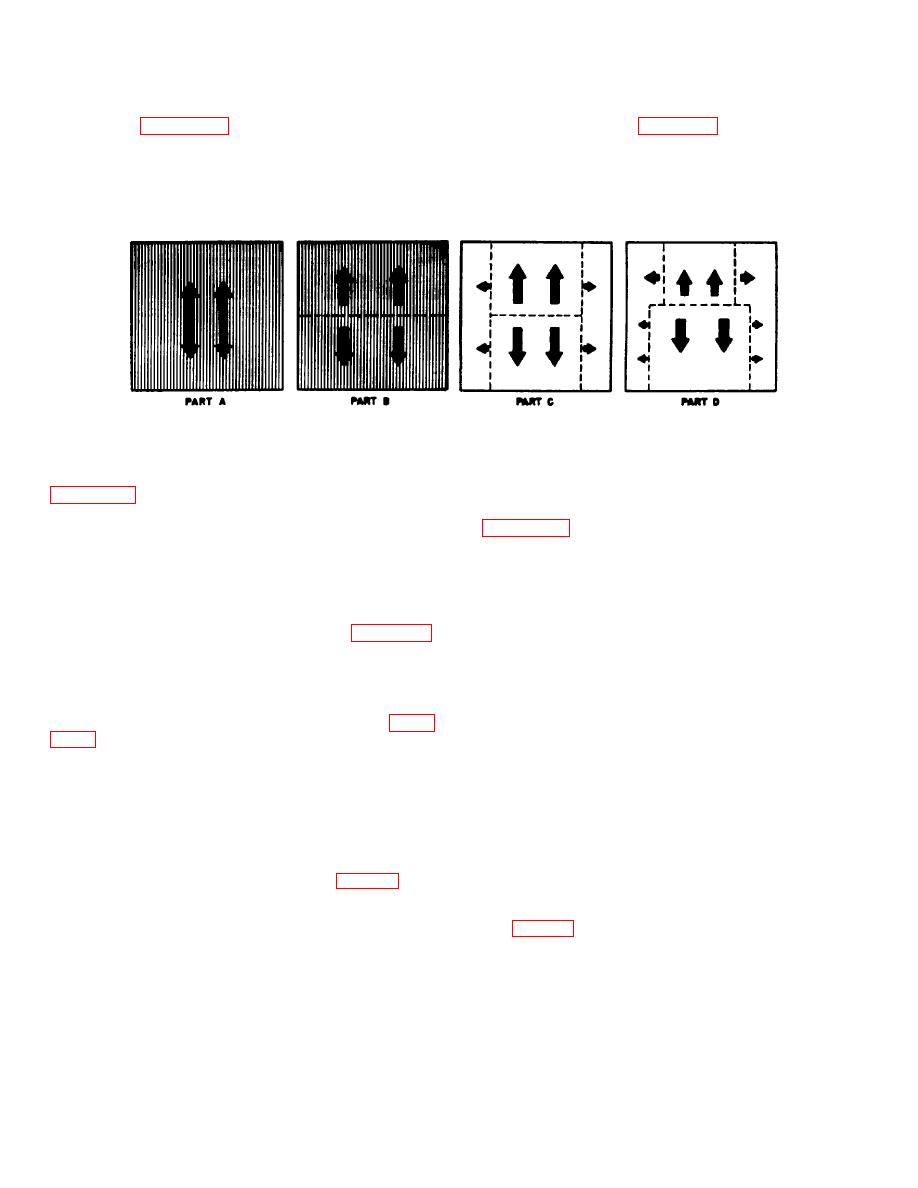 |
|||
|
|
|||
|
Page Title:
Figure 2-31. Example Direction of Storage Arrangements |
|
||
| ||||||||||
|
|
 TM 38-400/NAVSUP PUB 572/AFMAN 23-210 MCO 4450.14/DLAM 4145.12
equally over all working aisles thereby relieving
(3) The simplest but most inflexible
congestion.
disposition of storage space is storage of a single item
(2) Figure 2-31 shows a layout for large lot
aisle to aisle shown by figure 2-31, part A. With 4 pallet
loads stacked in each space, there are faces for 17
storage developed in respect to direction of storage.
different items, with each row containing 68 pallets.
This was developed based on the direction of storage in
This is the equivalent of about two carloads of materials.
a bay 80 feet square. Columns and other obstructions
This layout does not provide for storage of small lot
are not shown in this arrangement.
items.
Figure 2-31. Example Direction of Storage Arrangements
held in quantities of two carloads or more. The depth of
(4) One method for increasing the number of
side-to-back bays varies from one to four pallets to
rows and reducing the depth of each row is shown by
provide a variety of short rows. Pallet racks placed
side-to-back in bays permit fuller space utilization.
imaginary line perpendicular to the direction of storage,
and in each row different items are placed in opposite
present a standard layout for any class of materials, but
directions from this line. This practice is known as
only to point out what can be done with a fixed space
"back-to-back" storage and is standard for all storage
and various aisle arrangements to provide maximum
using the forklift truck and pallet system. This method
flexibility for storage operations.
allows faces for 34 items instead of 17 and each row is
only 40 feet deep, the equivalent of 1 carload. This
b. Basin bin, shelf, and rack layout criteria. The
layout is an improvement over that shown in figure 2-31,
amount of space assigned to a specific item within a bin
part A; however, it still does not make provisions for
section is governed by the factors shown in paragraph 2-
less-than-carload quantities.
9 above. However, the size or weight of an item is not
necessarily related to its popularity.
Fast moving
(5) Another method of storage which provides
binnable items, whether large or small, must be
further flexibility is obtained by placing short rows of
reassigned space adequate to minimize replenishment
pallets along the sides of a large bay as shown in figure
frequency, time, and effort. There are many factors
2-31, part C.
Stringers for these pallets are
favoring issues from bin locations and the repetitive
perpendicular to the predominant direction of storage;
issue of small quantities of binnable-type items from
this is known as "side-to-back" storage. An
imaginary
bulk storage can rarely be justified. Proper use of bins
line is drawn and small lots are placed from this line out
will minimize the inventory and security problems found
to the aisles. Using all aisles as faces of stacks
where there are broken cases of binnable-type items in
provides space for small lots without increasing the
bulk storage locations. Fast moving items should be
number of aisles and without sacrificing accessibility.
kept in the center levels to facilitate issue and the heavy
(6) The off-center division shows how further
items should be placed in the lower levels. Lightweight
variety in row sizes can be provided (see fig 2-31, part
items should be placed on the upper levels. Bin
D). The back-to-back line is set off-center which
shelving arrangements are developed on a sheet plan
provides one very large bay and one of intermediate
(see fig 2-32).
depth. Such a layout is desirable only when there is
assurance that a substantial number of items will be
2-30
|
|
Privacy Statement - Press Release - Copyright Information. - Contact Us |